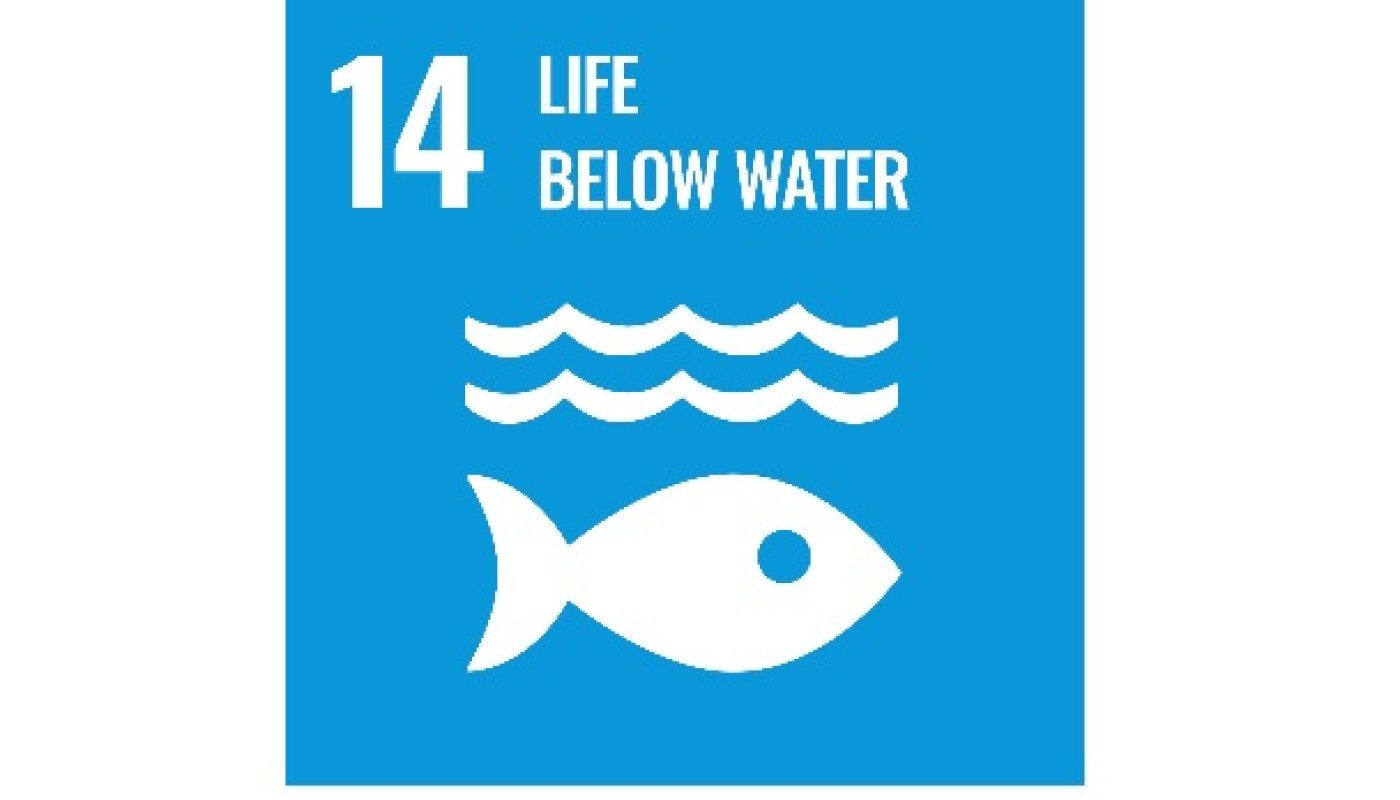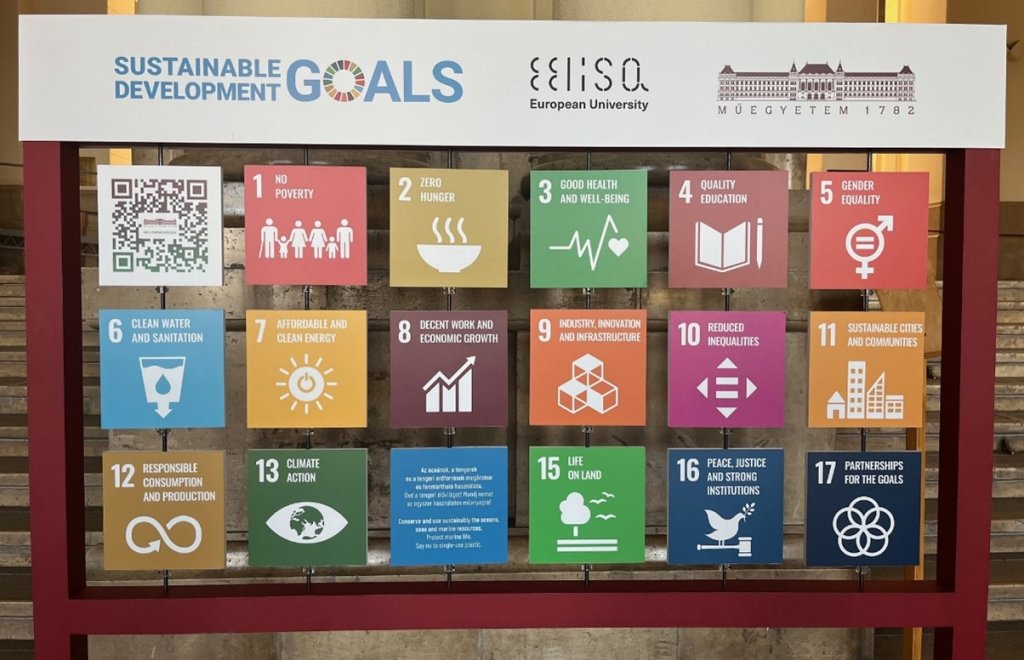News feed
17 Goals for a better world – no. 14: Life below water
2024. 06. 26.
Our series of articles entitled “Sustainable Tuesday(s)”, will take a look over 17 weeks at the 17 Sustainable Development Goals (SDGs) set by the UN to make the world a better place.
This week we are focusing on SDG 14 - Life below water, which is summarized as Conserve and sustainably use the oceans, seas and marine resources for sustainable development.
Protect marine life! Say no to single-use plastic!

Although Hungary does not have direct access to the seas and oceans, it has an indirect connection, as the entire territory of the country is located in the Danube river basin. This means, in theory, that any drop of rain falling anywhere within the country’s borders will sooner or find its way to the Danube, and from there into the Black Sea. The same is true for materials transported in watercourses, whether sediment, organic matter, pet bottles or pollution because rivers act as conveyor belts for all waterborne materials. Therefore, the protection of marine life begins on a small scale, in streams, rivers and their river basins, with the knowledge and understanding of flow-related phenomena and the migration processes of waterborne sediment and pollutants. This ambition is reflected in both educational and research activities at the Budapest University of Technology and Economics.
In the bachelor’s, master’s and doctoral training programmes of Department of Hydraulic and Water Resources Engineering and the Department of Sanitary and Environmental Engineering of the Faculty of Civil Engineering, students have interdependent subjects on fluid mechanics, transport processes, sediment transport, and mixing phenomena. After mastering the physical background, they acquire computer simulation know-how that enables them to model complex processes and even learn cutting edge measurement procedures. In the last 5 years of the BME’s Students' Scientific Association (TDK) conferences, a total of 13 student research projects have focused on the study of river bed material composition, rolling and floating sediment transport, and river plastic pollution.
In addition to education, the specialists of the BME are also engaged in research on the subject, which is not an entirely new phenomenon. The Department of Hydraulic and Water Resources Engineering of the BME (https://www.facebook.com/bmevvt) have participated in several EU-funded international projects completed in recent years as a professional partner and even as a working group leader, which have included the examination of the sediment balance of the Danube and the development of measurement and monitoring procedures: DanubeSediment (https://dtp.interreg-danube.eu/approved-projects/danubesediment), SIMONA (https://dtp.interreg-danube.eu/approved-projects/simona), SEDDON II (https://www.interreg-athu.eu/en/seddon2/).
The BME is currently involved in multiple international collaboration projects. The DanubeSediment_Q2 project (https://interreg-danube.eu/projects/danubesediment-q2%C2%A0) is the next stage of the above listed collaborations. The project’s main objective is to compile an integrated sediment management plan that also takes into account the quantitative and qualitative risks of sediment, from the source of the Danube to the Black Sea. In the Danube4All project under the Horizon Europe programme(https://www.danube4allproject.eu/), improving sediment balance is one of subtopics in the complex objective of the restoration of the Danube river basin. BME’s Department of Hydraulic and Water Resources Engineering is actively involved in both projects.
Diverse pollution loads reaching the seas can come from both point sources (e.g. sewage plants) and diffuse sources (e.g. agricultural and urban drainages). BME’s Department of Sanitary and Environmental Engineering (https://www.facebook.com/BMEVKKT) works in both topics in depth. Their research findings contribute to the river basin management of the Danube, in particular its water quality aspects. Their related Interreg projects: Danube Water Balance develops a uniform surface-underground water balance calculation methodology for the Danube basin (https://interreg-danube.eu/projects/danube-water-balance), while the Thetys project focuses on the monitoring and transport modelling of hazardous substances present in the Danube’s water system (https://interreg-danube.eu/projects/tethys). In 2024, they also promote their results at two self-organized conferences and emphasize the protection of aquatic ecosystems (https://www.riverbasins.kit.edu/, https://lwwtp2024.org/).
In Hungary, the National Laboratory for Water Science and Water Safety (https://vvnl.net/) is a research project with the participation of BME, among others, in a total of 40 sub-projects within 6 pillars. One of the pillars focuses on river research, and one of its sub-projects focuses on the plastic pollution of rivers under the leadership of the BME. Within the framework of the Sustainable Technologies Subprogramme of the MTA’s National Programme for Sustainable Development Technologies (https://fenntarthatotechnologiak.hu/), the Department of Hydraulic and Water Resources Engineering is leading and researching sub-topics on river sediment management and macro-plastic pollution.
There is a lot of research going on at BME on the recyclability of plastic waste from different aquatic environments. Research activities are being carried out in cooperation with the BME’s Faculty of Mechanical Engineering (Department of Polymer Engineering), the Faculty of Chemical Technology and Biotechnology (Department of Organic Chemistry and Technology), and the Faculty of Civil Engineering (Department of Hydraulic and Water Resources Engineering). Within the framework of the research, the time spent in nature and the recyclability of plastic bottles collected from the Tisza river basin are studied. In addition, the microplastic pollution of the Danube is being mapped and the recyclability of the microplastics collected during the tests is also being analysed. In addition, an artificial (accelerated) aging process has been developed during the research project, with which exposure in the marine environment of about 3-4 years can be modelled in only 3 months. With the help of this method, the recyclability of artificially aged “marine” plastic waste has examined. Successful comparative tests have been conducted with five different plastic processing technologies from this aged “marine” waste.
The research areas of the BME’s Faculty of Chemical Technology and Biotechnology include the chemical analysis of aquatic pollutants and the study and forecasting of the their effects on the ecosystem. In addition to conventionally known pollutants, newly emerged harmful compounds such as pharmaceutical agents, endocrine disruptors and nano-compounds, e.g. nano-titanium dioxide or nano-graphene oxide, are in the focus of environmental toxicology research. Their potential effects on the aquatic environment are measured using modern environmental toxicological methods with various test organisms such as germinating bacteria, protozoa and water fleas. The development of wastewater treatment technologies focuses both on reducing the entry of these micropollutants into surface waters and on the effective removal of macro nutrients that cause eutrophication.
Within the framework of the MNB-BME cooperation, the Faculty of Economic and Social Sciences have prepared a sustainable business model of the Clear Rivers floating platform in the Danube section in front of the K building of the BME. An exemplary collaboration of researchers, non-governmental organizations and economic operators, the waste collection floating platform was implemented for a cleaner Danube, and its inauguration took place in the summer of 2021 on the embankment in front of the main entrance of the BME. The business model of the floating platform designed to reduce plastic pollution in rivers is fundamentally different from the classic profit-oriented activities, so the GTK’s staff assessed the activity, economic aspects, the integration of the floating platform into the domestic waste management system as well as potential cooperating partners, thus creating a complete sustainable business model canvas.
The term SDG stands for the 17 Sustainable Development Goals established by world leaders at the 2015 UN summit to set new directions for global development. In a series of articles called “Sustainable Tuesday(s”, we will take a look at the 17 Sustainable Development Goals (SDGs) over 17 weeks and show what BME is doing to achieve them, within its own means. You can check out these development goals in a playful way with the help of boards placed at the entrances of the 3 busiest buildings (E, K, Q) on the BME campus. For more information on this topic, you can join the BME GreenHub Facebook group and visit BME’s main website to access our BME for Sustainability platform |
SZZS, KK (BME Committee on Sustainability)
